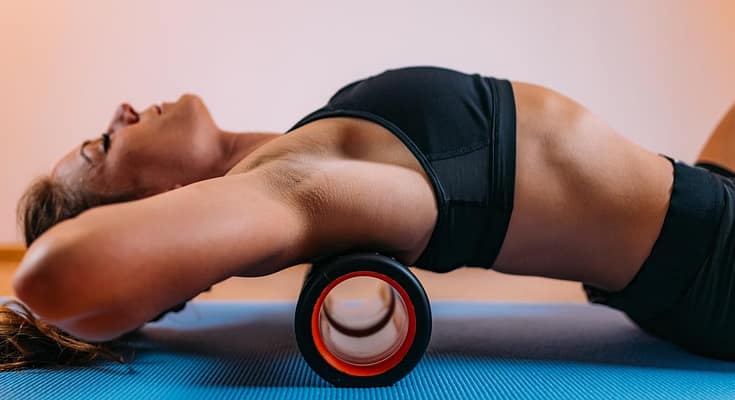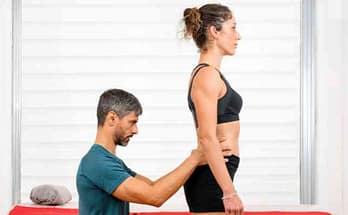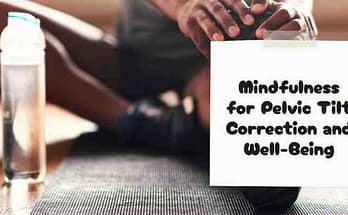Foam rollers are an excellent tool for improving your posture and flexibility. They’re also helpful for self-massage, but you can’t pick just any old foam roller off the shelf and expect it to do what you need. You’ve got to know what features are essential to ensure that your foam roller can help you achieve your goals.
In this blog post, we’ll talk about how foam rollers work and why they’re such an excellent tool for posture improvement. We’ll also explain how to choose the right one based on your needs so that you can better understand when (or if) it’s time to buy one!
Solid vs. Hollowed-out Foam Rollers
There are two types of foam rollers on the market: solid and hollowed-out. The main difference between them is that solid foam rollers have been carved into a cylindrical shape, while hollow ones are made from a single piece of cylindrical foam with no holes or other features.
Solid foam rollers are denser and firmer than hollow ones, so they’re better at supporting your body weight. They’re also less likely to break down over time or lose their shape. On the other hand, hollowed-out foam rollers are more comfortable to lie on because they mold around your body when you lie down.
The type of activities you’re doing is also a factor. If you’re using the roller to stretch or relax, a hollowed-out foam roller is more comfortable than a solid one. If you plan on using your roller as part of an intense workout regimen that involves high-impact movements like running or jumping, then it makes sense to go with a solid foam roller.
Harder, Firmer Foam vs. Softer Foam
The firmer the foam roller, the more it will be able to provide support for your body weight. This is important for posture exercises and stretches because you need something to support your body weight as you stretch out muscles or do other exercises.
However, a firm foam roller can make some people uncomfortable if they are not used to using one. If this is you, consider getting an extra soft foam roller instead!
Smooth vs. Textured or Ribbed
For beginners, a smooth foam roller will be the best choice. If you’re not sure if you’ll stick with it or if you’re not sure what level of intensity to start with, this is the way to go. It’s also great for people looking for an overall tone-up and recovery tool.
Beginners usually use smooth rollers as they are easy on the skin and tend not to cause discomfort while stretching or rolling out muscles. They have a flat surface across their length, so they are good at targeting large areas at once, such as your back or legs (especially hamstrings). They can also be used on sensitive areas like quads and calves without causing pain.
Extra Features of Foam Rollers
There are some other features to consider when purchasing a foam roller. Some have handles on the sides, making it easier to use in certain positions. Others have wheels so you can roll the foam roller around as you stretch or exercise. Some have straps for holding the foam roller in place or attaching it to your foot as you do exercises like inner thigh extensions or quadriceps stretches.
There’s no perfect option for every person and every situation—what works best for one person may not work for another—but having a few options gives you more flexibility when choosing which products work best for your needs!
Density of a foam roller, the texture and firmness, and extra features
- Look at the density of a foam roller, the texture and firmness, and any extra features before purchasing one.
Density refers to how much weight a foam roller can support before it collapses or breaks down (e.g., a 3-pound density means the material will support three pounds before losing its shape). The denser the material, the more durable it is and the less likely it is to break. However, this also means that these rollers are slightly harder on your muscles because they don’t give as quickly under pressure from your body as softer rollers do.
- Smooth surfaces are better suited for beginners because they offer less traction than textured surfaces, making them easier to use without accidentally slipping off or rolling up on themselves! Textured surfaces provide increased traction (or grip), which helps prevent slippage during advanced movements where you need greater control over where you place each limb at all times so as not to cause injury while performing them correctly manually too
We hope this article has helped you decide which foam roller is best for you. Remember, choosing one that fits your needs is important to get the most out of your exercises and stretches. If you want something that will stand up to the test of time and challenge your body in ways, it never thought possible—by using a softer surface or harder one—then start looking around!




